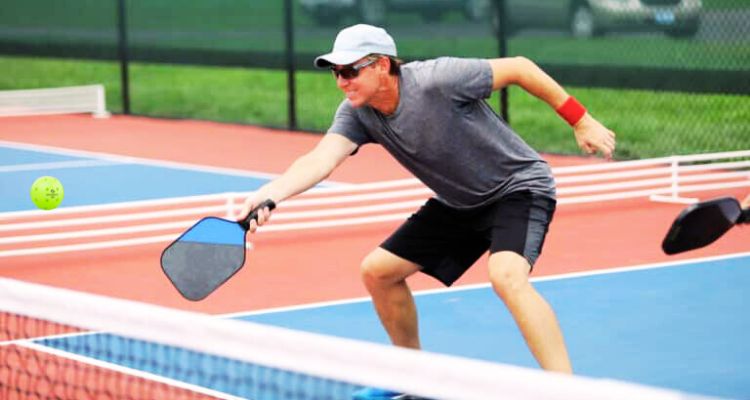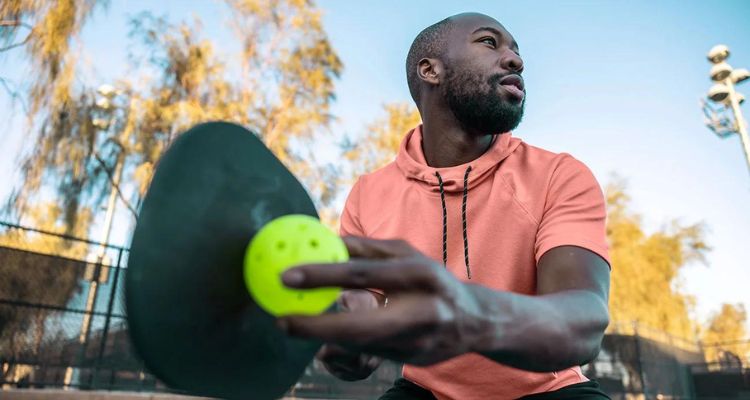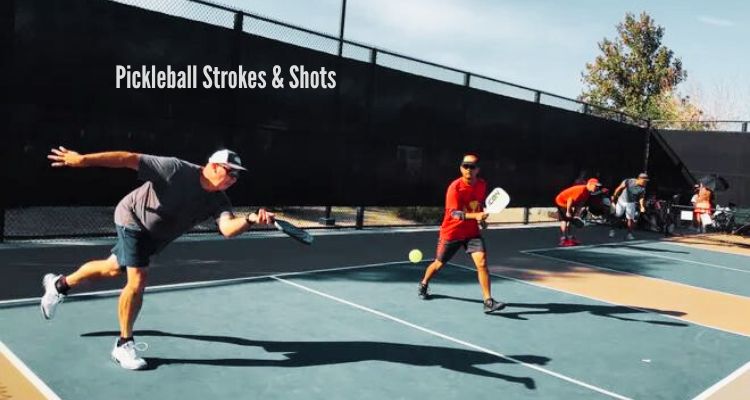Do you love playing pickleball and are always looking for ways to improve your game? Well, have you ever heard of the mysterious “4th shot” and how it can take your play to the next level? In this exciting blog post, we’re going to dive into the world of pickleball strategy and explore everything you need to know about the elusive 4th shot. Are you ready to raise your game and dominate the court?

First things first, let’s talk about what exactly the 4th shot is in pickleball. As you know, pickleball combines elements of tennis, badminton, and table tennis, and the rules are pretty simple. But did you know that there are actually three shots that can be taken in pickleball: forehand, backhand, and serve? Well, the 4th shot is a special technique known as “the pickleball third shot drop” or “the third shot dink” (or even the “volley drop”).
This shot happens after both opponents have made two returns, and it involves dropping your paddle low to hit a soft return with little pace just over your opponent’s reach. It can result in an unforced error or even a winning point!
This move can be tricky for new players, but experienced ones use it all the time to gain an advantage over their opponents. It’s become increasingly popular among pickleball enthusiasts, so if you’re looking for something new to try or want a change from your usual tennis routine, give pickleball a shot! Trust us, you won’t regret it.
Now, let’s talk about court positioning for the 4th shot. Pickleball is a fast-paced and exhilarating game that requires quick movement and strategic court positioning. The 4th shot is essential because it can set up the next point or even score you a point. So, how should you position yourself on the court for this shot? It’s all about paying attention to where your opponents are and anticipating their next move.
This will help you decide whether you should hit deep or short, near the line or further away from it. It’s also crucial to ensure your body is balanced so you can move quickly when needed. For example, if you’re hitting crosscourt, try to stay close with your feet at shoulder width apart for better control and quick reactions.
If you’re hitting down the line, stay back from the net with your feet slightly wider than shoulder-width apart to add power to your shots. When playing defensively on the 4th shot, look for openings on either side of the court rather than going straight down the middle.
Aim lower to give your opponents less time to react while still allowing yourself enough time to get back into position if necessary. By understanding how different court positions affect the game during the 4th shot, you can strategically set yourself up for success and increase your chances of winning points. So, get out there and dominate the court!

Now, let’s move on to some pickleball strategies for the 4th shot. These strategies are all about maintaining your advantage, holding the Kitchen line, and putting pressure on the serving team. Here are some tips to help you achieve pickleball greatness:
1. Keep the Serving Team at Baseline: The 4th shot is a crucial moment in the game, and you want to make sure you keep your serving team at baseline. This means using good footwork and positioning to stay within reach of each other’s shots. Be aware of where your opponents are on the court, so you can anticipate their returns or shots.
When returning the ball with your 4th shot, aim for deep shots near your opponent’s back line if possible. This will put pressure on them and make it more difficult for them to return your serve successfully. Focus on accuracy rather than power to control where you place your shots during rallies. Practice consistency by playing regularly to develop better awareness of each player’s movement on the court and how to position yourself strategically.
2. Hit Down on the Pickleball: One strategic element of pickleball is the 4th shot drop. This shot requires you to hit down on the ball, causing it to bounce low over the net and away from your opponent’s reach. Angle your paddle slightly below the center of the ball when making contact to achieve a lower trajectory.
Follow through with an upward motion to maintain power and momentum. Mastering this technique will give you control over your shots and set up your opponents for difficult returns. Practice and careful planning are key to improving your game with the 4th shot drop.
3. Hit Your Typical Targets: Hitting your typical targets is a great way to improve your pickleball game. It involves understanding the fundamentals of pickleball and developing the right strategy for the 4th shot. The goal is to hit shots you can consistently make while keeping your opponent guessing.
Target different areas of the court, such as deep corner pockets, wide angles, short angles, and lobs over your opponent’s head. Vary the height and speed of your shots to keep them off balance. This strategy allows you to control where each point goes and keeps your opponent guessing what’s coming next.
4. Beware of the Poach: The 4th shot in pickleball requires a great deal of strategy, and one critical method is to be aware of poaching. Poaching occurs when a player strategically moves across the court to hit their opponent’s ball, potentially turning an easy point for them into an advantage for you.
However, poaching must be executed carefully, as it can backfire if not done properly. Consider where your opponent will hit next, how much time you have before your next shot, and what kind of spin or power to put on your return shot. When done correctly, poaching can disrupt your opponent’s momentum and give you control of the game.
5. Be Careful When Using a Drop Volley: The drop volley is a great strategy to take advantage of your opponent’s weak return and put them on the defensive. However, it can also be risky if not executed properly. Keep your drop volley close to the net or far away from your opponent to avoid giving away an easy point or committing a double fault.
Focus on accuracy and placement rather than power to maximize effectiveness. Only use drop volleys when there’s a specific target in mind, and if not, opt for a safer option like an overhead smash.
6. Let the “Out Balls” Go: Using “out balls” strategically can give you an advantage in pickleball. An out ball is a shot that forces your opponent to miss their next hit because it’s placed far away from them. By strategically placing out balls, you can increase your chance of success.
Make sure to place them far enough away from your opponent to prevent a return hit or an opportunity for them to position themselves for another impact. Keep them close enough together so that if one goes wide or long, there’s another one following up soon after. This can catch your opponents off guard and give you an easy point-winning opportunity.
7. Start Aggressively If You Are the Kitchen Partner: If you’re the kitchen partner, the 4th shot can be a game-changer for you. Start aggressively and control the point to make it more challenging for your opponents to respond. Deliver power shots that force your opponents back and aim for spots where they aren’t expecting the ball.
Take advantage of any open court space and place shots precisely where they’ll cause maximum disruption. By starting aggressively with your 4th shot, you can gain the upper hand in the match and get one step closer to victory!

FAQs
What exactly is the 4th shot in pickleball?
The 4th shot in pickleball refers to the second shot hit by the returning side after the serve and return by the serving team. It is an offensive shot aimed at gaining control over the rally.
Why is the 4th shot important in pickleball strategy?
It enables the returning team to seize initiative in the rally instead of being stuck defending. An effective fourth shot like a drop or smart placement makes opponents cover more distance or move out of position.
What makes an effective 4th shot in pickleball?
Good pace and height over the non-volley line, directed away from opponents’ position, landing deep towards the baseline making them run back, unexpected deceiving placements are qualities of a great 4th pickleball shot.
What are the most common types of 4th shots used?
The forehand or backhand drop, the lob, driving groundstrokes down the line or crosscourt, low slices and touch shots that die in the kitchen area are popular offensive fourth shot selections in pickleball.
What strategies help defend against good 4th shot returns?
Anticipating common fourth shot placements and communicating with your partner is key. Split step for quick reaction and keeping your paddle up helps deal with volley drops. Lobs used judiciously can counter baseline drives and low returns.
What mistakes should I avoid when hitting my 4th shot?
Avoid hitting too close to opponents at the non-volley zone, lack of pace or height clearing the net, predictable shots to the same locations, and hitting too directly at the opponent team. Poor execution gives them the attack.
Conclusion
In conclusion, the 4th shot in pickleball is an underappreciated aspect of the game. By mastering this shot and understanding the various strategies involved, you can take your game to new heights. So, next time you step onto the court, remember these tips and techniques. And always stay one step ahead of your opponents. Are you ready to become a pickleball champion? Let’s meet up on the courts and make it happen!



